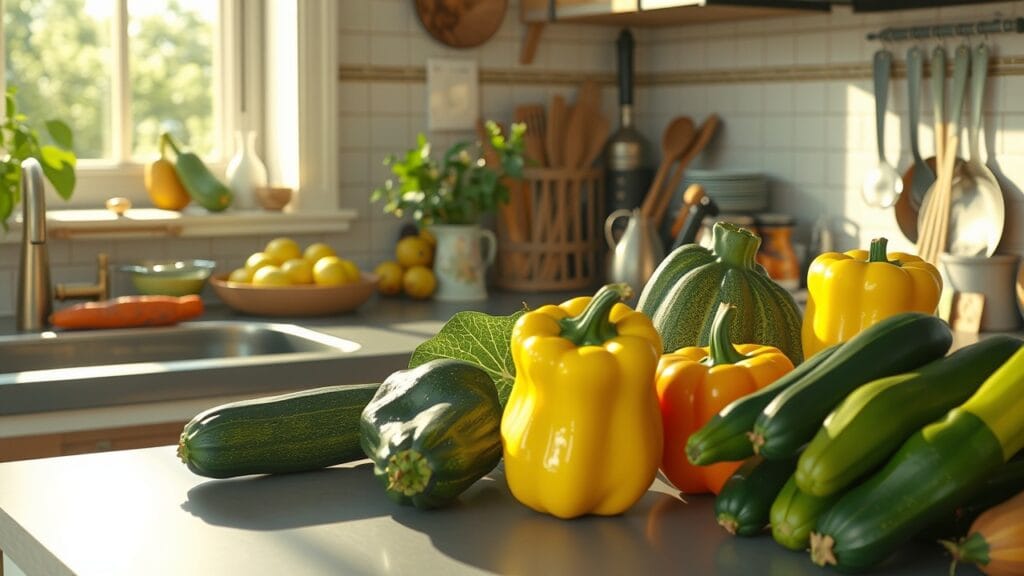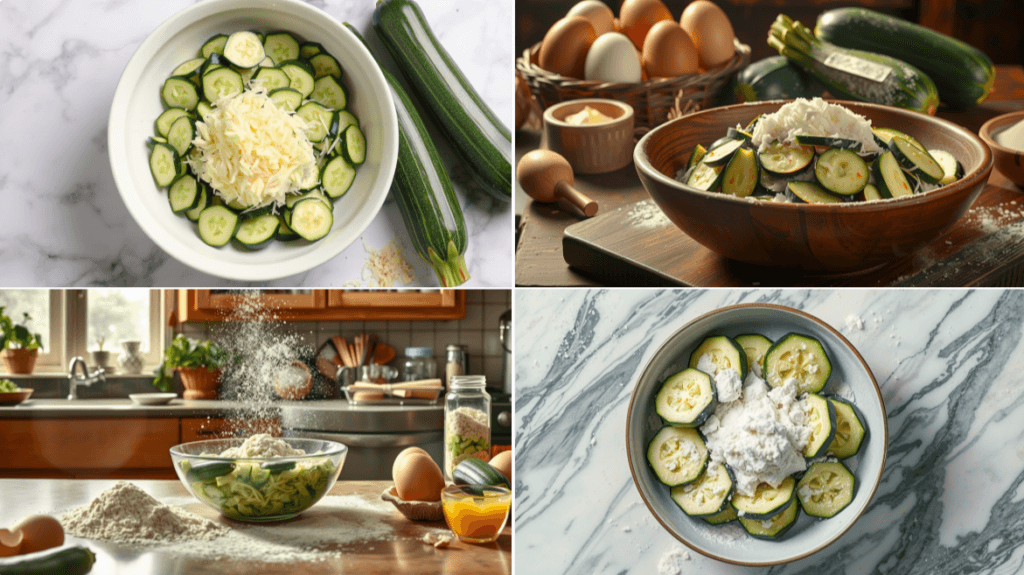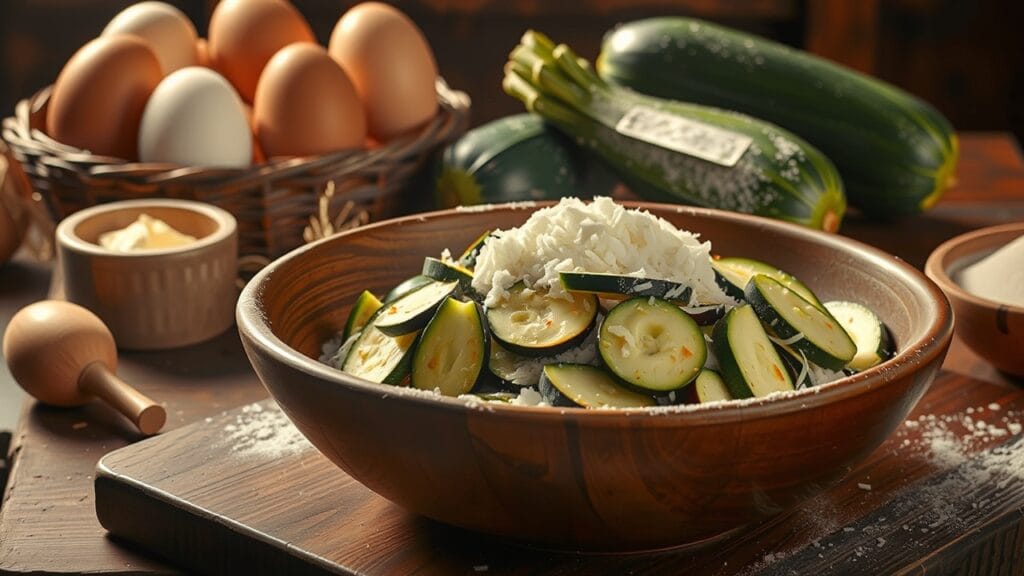Introduction
Baking with vegetables might sound a bit strange at first, but once you’ve tried a moist, flavorful zucchini cake, you’ll be hooked. The question on many bakers’ minds, though, is whether to take the seeds out of zucchini when making cake. This article will delve deep into the role of zucchini seeds in baking and help you make the best decision for your delicious creations.
The Popularity of Zucchini Cake
Zucchini cake has gained quite a reputation for being incredibly moist and subtly sweet. It’s a sneaky way to include some veggies in your dessert without compromising on taste. With its tender crumb and delightful flavor, zucchini cake has become a favorite among home bakers and pastry chefs alike.
Nutritional Benefits of Zucchini
Zucchini isn’t just a great addition to savory dishes; it’s also packed with nutrients that make it a worthy candidate for sweet treats. Rich in vitamins A and C, potassium, and dietary fiber, zucchini brings a healthful twist to your baking. Plus, it’s low in calories, making it a guilt-free indulgence.

Understanding Zucchini
What is Zucchini?
Zucchini, also known as courgette in some parts of the world, is a summer squash that belongs to the Cucurbitaceae family. It’s typically dark green, although you can find variations in yellow or light green. Zucchini is incredibly versatile and can be used in both savory and sweet dishes, making it a staple in many kitchens.
Varieties of Zucchini
There are several varieties of zucchini, each with its own unique characteristics. Some popular types include:
- Green Zucchini: The most common variety, usually dark green and smooth-skinned.
- Yellow Zucchini: Similar in taste and texture to green zucchini but with a vibrant yellow color.
- Round Zucchini: Perfect for stuffing, these are small and spherical in shape.
- Pattypan Squash: Often mistaken for zucchini, these are scalloped and come in various colors.
Nutritional Profile of Zucchini
Zucchini is a nutritional powerhouse. Here’s a quick look at what this veggie brings to the table:
- Vitamins: High in vitamins A and C, which are essential for immune function and skin health.
- Minerals: Contains potassium, which helps regulate blood pressure.
- Fiber: A good source of dietary fiber, aiding in digestion and promoting a feeling of fullness.
- Antioxidants: Rich in antioxidants like lutein and zeaxanthin, which support eye health.
Zucchini in Baking
Why Use Zucchini in Cake?
You might be wondering why anyone would put zucchini in a cake. The answer lies in its unique properties. Zucchini has a high water content, which keeps cakes moist and tender. It also has a mild flavor that blends well with other ingredients, making it perfect for sweet dishes. Plus, using zucchini in your baking is a clever way to sneak in some extra nutrients.
Common Recipes for Zucchini Cake
Zucchini cake can be made in various ways, each offering a unique twist on this classic dessert. Here are some popular recipes:
- Classic Zucchini Bread: A simple and traditional recipe that highlights the natural sweetness of zucchini.
- Chocolate Zucchini Cake: Adding cocoa powder and chocolate chips transforms zucchini cake into a rich, decadent treat.
- Lemon Zucchini Cake: The bright flavor of lemon pairs beautifully with the subtle taste of zucchini, creating a refreshing dessert.
- Zucchini Carrot Cake: Combining zucchini with carrots results in a nutrient-packed cake with a delightful texture.
Block Quote
“Baking with zucchini is like adding a secret ingredient that guarantees moisture and tenderness. It’s the trick up every savvy baker’s sleeve.” – Baking Enthusiast
In the next part of the article, we’ll explore the role of seeds in zucchini, whether you should remove them, and how to prepare zucchini for your cake. Stay tuned for more insights! 🥒🍰✨ If you have any questions or need further assistance, feel free to ask. 😊
The Role of Seeds in Zucchini
Anatomy of a Zucchini
To understand whether you should remove the seeds from zucchini, it’s helpful to know a bit about its anatomy. Zucchini is composed of three main parts: the skin, the flesh, and the seeds. The skin is usually smooth and thin, the flesh is firm and juicy, and the seeds are found in the central core of the vegetable.
Are Zucchini Seeds Edible?
Yes, zucchini seeds are edible. They are soft and small, especially when the zucchini is young. Unlike other squash seeds, they don’t have a tough outer shell, making them easy to eat. However, as the zucchini matures, the seeds can become larger, tougher, and more noticeable in texture.
Nutritional Value of Zucchini Seeds
Zucchini seeds, like the rest of the vegetable, are packed with nutrients. They contain:
- Fiber: Helps with digestion and keeps you feeling full.
- Protein: Contributes to muscle building and repair.
- Healthy Fats: Provide energy and support cell growth.
- Vitamins and Minerals: Such as magnesium and potassium, which are essential for various bodily functions.
While the seeds are nutritious, they may not always be desirable in baked goods due to their texture.
Preparing Zucchini for Cake

Should You Remove the Seeds?
The answer to whether you should remove the seeds depends on a few factors, such as the size and maturity of the zucchini and personal preference. Here are some general guidelines to help you decide:
- Young Zucchini: If you’re using young, small zucchini, the seeds are likely to be soft and barely noticeable. In this case, there’s no need to remove them.
- Mature Zucchini: Larger, mature zucchini tend to have bigger, tougher seeds. These seeds can add an unwanted texture to your cake, so it’s best to remove them.
- Personal Preference: Some people are more sensitive to textures in baked goods. If you or your family prefer a smoother texture, it’s a good idea to remove the seeds regardless of the zucchini’s age.
How to Remove Zucchini Seeds
If you decide to remove the seeds, here’s a simple method:
- Cut the Zucchini: Slice the zucchini in half lengthwise.
- Scoop Out the Seeds: Use a spoon to gently scrape out the seeds from the center of each half. Be careful not to remove too much of the flesh, as that’s where most of the moisture and flavor come from.
- Grate the Zucchini: Once the seeds are removed, grate the zucchini using a box grater or food processor. The grated zucchini is now ready to be used in your cake batter.
Alternatives to Removing Seeds
If you prefer not to go through the hassle of removing seeds, consider these alternatives:
- Use Small Zucchini: Smaller zucchini have fewer and softer seeds, making them less noticeable in your cake.
- Puree the Zucchini: Pureeing the zucchini instead of grating it can help blend the seeds into the batter, making them less detectable.
- Strain the Grated Zucchini: After grating, you can strain the zucchini to remove excess moisture and any larger seed pieces.
Block Quote
“Choosing the right zucchini and preparing it properly can make all the difference in your baking. It’s the little details that elevate a good cake to a great one.” – Baking Expert
Common Problems and Solutions
Bitter Taste in Zucchini Cake
One common issue that bakers encounter with zucchini cake is a bitter taste. This bitterness can come from the seeds or the skin of the zucchini. Here are some solutions to tackle this problem:
- Remove the Seeds: If you’re using a mature zucchini, the seeds can contribute to bitterness. Removing the seeds before grating the zucchini can help.
- Peel the Zucchini: Sometimes the skin can be bitter, especially if the zucchini is older. Peeling the zucchini can reduce bitterness.
- Choose Young Zucchini: Opt for small, young zucchini as they tend to be sweeter and less bitter.
Texture Issues in Zucchini Cake
Another challenge is getting the right texture. Here’s how to address common texture problems:
- Too Dense: If your cake turns out too dense, make sure not to overmix the batter. Overmixing can lead to a dense texture.
- Too Wet: Zucchini has a high water content, which can make the cake too wet. After grating the zucchini, squeeze out excess moisture using a clean kitchen towel or cheesecloth.
- Uneven Texture: Ensure the zucchini is evenly distributed throughout the batter. Properly mix the grated zucchini into the batter to avoid clumps.
Moisture Content in Zucchini Cake
Maintaining the right moisture level is crucial for a delicious zucchini cake. Here’s how to manage it:
- Strain the Zucchini: As mentioned, after grating the zucchini, strain it to remove excess water. This will prevent the cake from becoming soggy.
- Adjusting Flour: If your batter seems too wet even after straining the zucchini, you can add a bit more flour to balance the moisture.
- Baking Time: Make sure to bake the cake for the appropriate time. Underbaking can result in a mushy texture. Use a toothpick to check for doneness; it should come out clean when inserted into the center of the cake.
Tips for Perfect Zucchini Cake
Choosing the Right Zucchini
Selecting the right zucchini is the first step to making a perfect cake. Here are some tips:
- Size Matters: Small to medium-sized zucchini are ideal as they have a milder flavor and fewer seeds.
- Freshness: Choose zucchini that feels firm to the touch and has smooth, unblemished skin.
- Color: While green zucchini is most common, don’t hesitate to try yellow zucchini for a slight variation in flavor and color.
Proper Grating Techniques
How you grate the zucchini can impact the texture of your cake:
- Even Grating: Use a box grater or food processor to grate the zucchini evenly. This ensures consistent texture throughout the cake.
- Squeeze Out Moisture: After grating, place the zucchini in a clean kitchen towel or cheesecloth and squeeze out as much moisture as possible.
- Fine vs. Coarse: Decide whether you want a fine or coarse grate based on your preference. A finer grate will blend more seamlessly into the cake, while a coarser grate will provide more texture.
Balancing Flavors and Ingredients
A well-balanced zucchini cake is a delight. Here’s how to achieve it:
- Spices: Adding spices like cinnamon, nutmeg, or allspice can enhance the flavor of your zucchini cake.
- Sweeteners: Adjust the amount of sugar based on your taste preference. You can also experiment with honey or maple syrup for a different flavor profile.
- Add-Ins: Consider adding nuts, raisins, or chocolate chips to your batter for added texture and flavor.
Block Quote
“Baking is an art and a science. With the right tips and techniques, you can turn even the simplest ingredients into something extraordinary.” – Culinary Expert
Conclusion
Final Thoughts on Zucchini Seeds in Cake (H3)

To seed or not to seed, that is the question. While zucchini seeds are edible and nutritious, they can sometimes affect the texture and taste of your cake. For the best results, it’s often recommended to remove the seeds from mature zucchini, while young zucchini can be used whole. Ultimately, it comes down to personal preference and the specific recipe you’re using.
Encouragement to Experiment
Don’t be afraid to experiment with zucchini in your baking. Whether you choose to remove the seeds or not, the key is to enjoy the process and create a cake that delights your taste buds. Happy baking! 🥒🍰✨
Block Quote
“The joy of baking lies in experimentation. Every recipe is a canvas, and every ingredient is a color. Create your masterpiece with love and creativity.” – Baking Enthusiast

